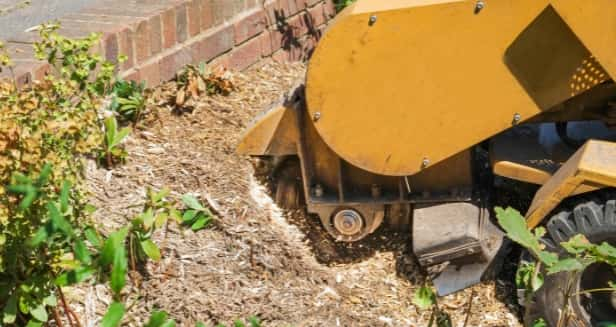Introduction: At LM Tree Surgery Hayling Island, we understand that maintaining your trees’ health is crucial for your landscape’s beauty and safety. Trees, like any other living organisms, can experience stress due to various environmental factors. Recognising the signs of tree stress early and addressing them promptly can prevent further damage and ensure the longevity of your trees. This blog post will discuss common signs of tree stress and provide practical solutions to help you manage and mitigate these issues.
Common Signs of Tree Stress
- Leaf Discolouration
- Yellowing Leaves: Leaves that turn yellow out of season may indicate nutrient deficiencies or overwatering.
- Brown or Scorched Leaves: Brown edges or scorched leaves can result from drought stress or excessive heat.
- Early Leaf Drop: If a tree sheds its leaves earlier than usual, it might suffer from root problems or disease.
- Wilting Leaves and Branches
Wilting can occur due to insufficient water uptake, root damage, or disease. Look for drooping leaves and branches, particularly during the growing season.
- Cracked or Peeling Bark
Bark that is cracking, splitting, or peeling away from the trunk can signal underlying issues such as fungal infections, pests, or environmental stressors.
- Cankers and Lesions
Cankers are dead, recessed areas on the trunk or branches caused by fungal infections or physical damage. They can weaken the tree and make it more susceptible to other issues.
- Poor Growth
Stunted growth, smaller leaves, and fewer flowers or fruits than usual indicate that a tree is struggling. This can result from nutrient deficiencies, poor soil conditions, or root problems.
- Visible Pests and Diseases
Infestations of insects or visible fungal growth can severely stress a tree. Common pests include aphids, borers, and caterpillars, while diseases can range from powdery mildew to root rot.
- Dieback
Dieback refers to the gradual death of branches, starting at the tips and progressing inward. This can be caused by environmental stress, disease, or root problems.
Addressing Tree Stress
- Proper Watering
Ensure your trees receive the right amount of water. Overwatering and underwatering can both cause stress. A deep watering once a week is generally better than frequent shallow watering. Use mulch to retain soil moisture and regulate temperature.
- Soil Management
- Aerate Soil: Compacted soil restricts root growth and water penetration. Aerate the soil around the tree to improve air and water flow.
- Amend Soil: Add organic matter such as compost to improve soil structure and nutrient content.
- Nutrient Management
Conduct a soil test to determine nutrient deficiencies and apply the appropriate fertilisers. Avoid over-fertilising, as this can harm the tree and the environment.
- Pruning
- Remove Dead or Diseased Branches: Prune out dead, damaged, or diseased branches to prevent spreading disease and pests.
- Thinning: Thinning the canopy can improve air circulation and light penetration, reducing stress on the tree.
- Pest and Disease Control
Monitor your trees regularly for signs of pests and diseases. Use appropriate treatments, such as insecticidal soaps or fungicides, and consider introducing beneficial insects that prey on harmful pests.
- Mulching
Apply a layer of mulch around the tree’s base, extending to the drip line. Mulch helps to retain moisture, regulate soil temperature, and reduce weed competition.
- Protecting Roots
Limit foot traffic and heavy machinery near the tree to avoid damaging the root zone. If necessary, consider installing protective barriers.
- Regular Inspections
Regular inspections by a professional arborist can help identify early signs of stress and implement corrective measures promptly.
Conclusion: Recognising and addressing tree stress is essential for maintaining the health and beauty of your landscape. By being vigilant and proactive, you can ensure your trees continue to thrive.
Call us on: 023 8235 2063
Click here to find out more about LM Tree Surgery Hayling Island
Click here to complete our contact form and see how we can help you with your tree’s needs.

